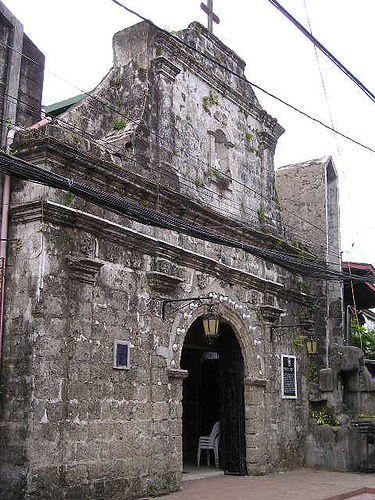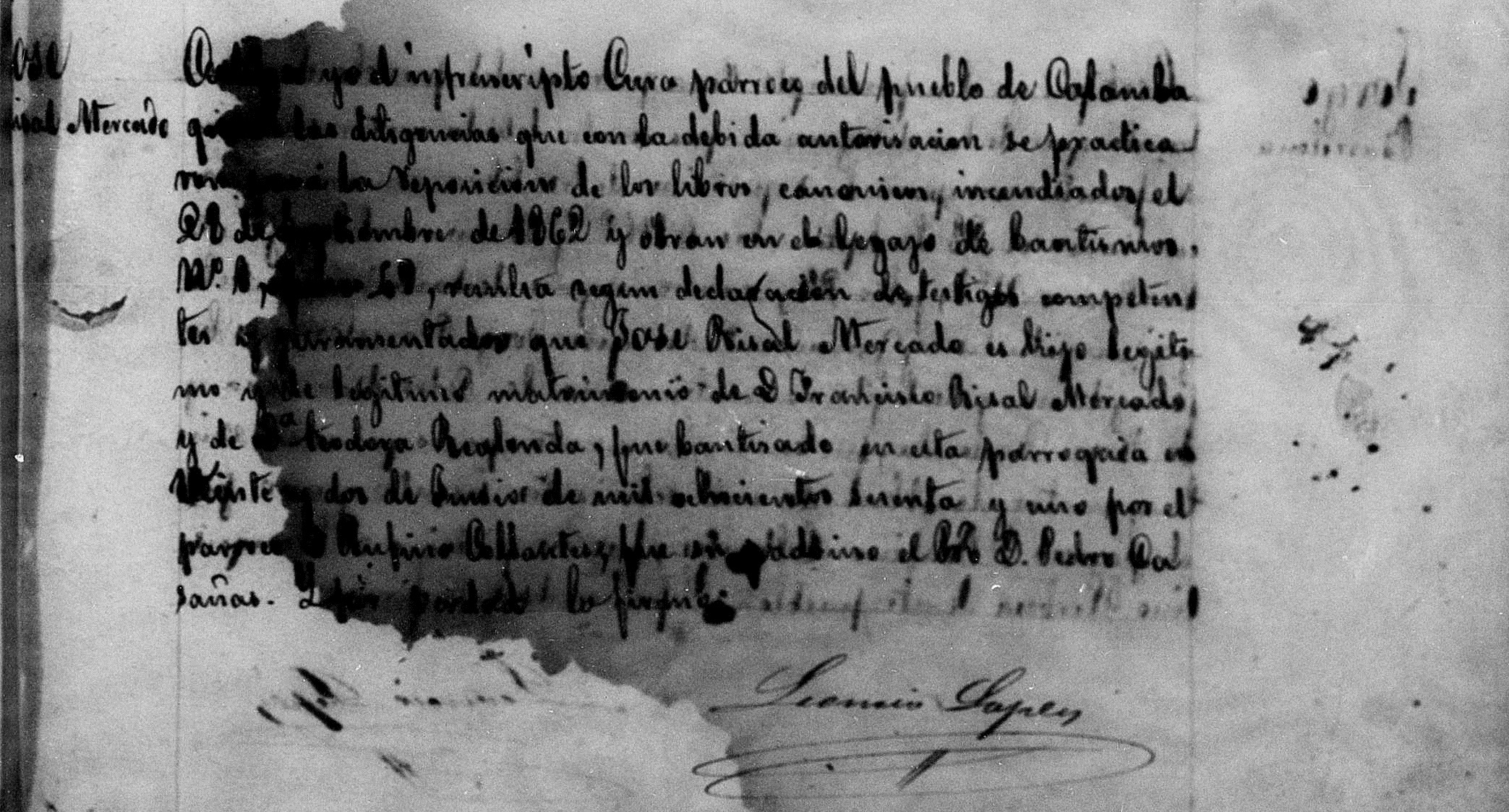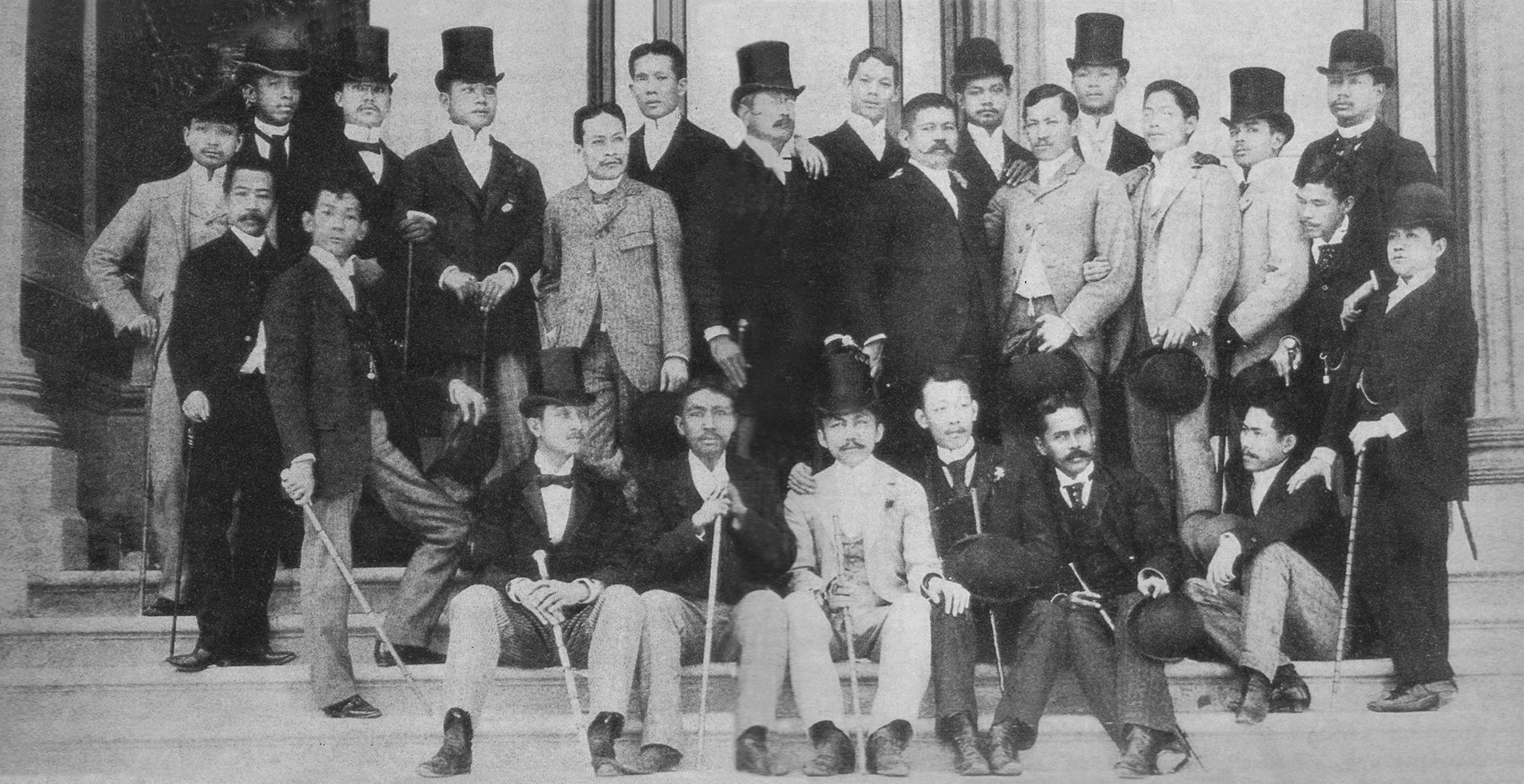|
Ambrosio Flores
Ambrosio Flores (March 20, 1843 – June 24, 1912) was a Filipino general in the Philippine Revolution and the first governor of the province of Rizal. Biography Ambrosio Flores was born on March 20, 1843, in the Philippine capital Manila. His parents were Ignacio Flores, a corporal in the Spanish army, and Josefa Flores. He studied Latin with Fr. Esteban del Rosario, as his private tutor, in Ternate, Cavite. He later studied philosophy at the University of Santo Tomas. After some time, he changed his studies and went to study medicine. On May 12, 1860, following his father's career, he enlisted in the Spanish army in the 9th Infantry Regiment of Isabel II where his father is a lieutenant. He was promoted to officer status on July 14, 1875. He served in Mindanao fighting the rebellious Muslims in the region. His military career for more than three decades included flag bearer of Jolo Regiment No. 6. He was also a ''defensor de oficio'' (lawyer for the defense) in military cou ... [...More Info...] [...Related Items...] OR: [Wikipedia] [Google] [Baidu] |
Governor Of Rizal
The governor of Rizal is the local chief executive of the Philippine province of Rizal. List References {{Provincial governors in the Philippines Governors of Rizal, Government of Rizal Governors of provinces of the Philippines Politics of Rizal ... [...More Info...] [...Related Items...] OR: [Wikipedia] [Google] [Baidu] |
Medicine
Medicine is the science and practice of caring for a patient, managing the diagnosis, prognosis, prevention, treatment, palliation of their injury or disease, and promoting their health. Medicine encompasses a variety of health care practices evolved to maintain and restore health by the prevention and treatment of illness. Contemporary medicine applies biomedical sciences, biomedical research, genetics, and medical technology to diagnose, treat, and prevent injury and disease, typically through pharmaceuticals or surgery, but also through therapies as diverse as psychotherapy, external splints and traction, medical devices, biologics, and ionizing radiation, amongst others. Medicine has been practiced since prehistoric times, and for most of this time it was an art (an area of skill and knowledge), frequently having connections to the religious and philosophical beliefs of local culture. For example, a medicine man would apply herbs and say prayers for healing, o ... [...More Info...] [...Related Items...] OR: [Wikipedia] [Google] [Baidu] |
Bulacan
Bulacan, officially the Province of Bulacan ( tl, Lalawigan ng Bulacan), is a province in the Philippines located in the Central Luzon region. Its capital is the city of Malolos. Bulacan was established on August 15, 1578, and part of the Metro Luzon Urban Beltway Super Region. It has 569 barangays in 20 municipalities and four component cities (Baliuag, Malolos the provincial capital, Meycauayan, and San Jose del Monte). Bulacan is located immediately north of Metro Manila. Bordering Bulacan are the provinces of Pampanga to the west, Nueva Ecija to the north, Aurora and Quezon to the east, and Metro Manila and Rizal to the south. Bulacan also lies on the north-eastern shore of Manila Bay. In the 2020 census, Bulacan had a population of 3,708,890 people, the most populous in Central Luzon and the third most populous in the Philippines, after Cebu and Cavite. Bulacan's most populated city is San Jose del Monte, the most populated municipality is Santa Maria while the least po ... [...More Info...] [...Related Items...] OR: [Wikipedia] [Google] [Baidu] |
Battle Of Calumpit
The Battle of Calumpit (Filipino language, Filipino: ''Labanan sa Quingua''), alternately known as the Battles of Bagbag and Pampanga Rivers, was fought from April 25–27, 1899, in Calumpit, Bulacan, during the Philippine–American War. Taking place after the Battle of Quingua, the fighting around Calumpit saw US forces under General Arthur MacArthur Jr. once again face General Antonio Luna's main force, with whom they had clashed during the Capture of Malolos, fall of Malolos on March 31, 1899. Background Beginning on March 25, the Americans began their drive to capture Malolos, the Philippine capital at the time, hoping that it would shatter the morale of the Filipino troops. This was achieved on March 31, amidst token resistance by about 5,000 Filipinos. The capital had already been transferred to San Isidro, Nueva Ecija, before the debacle, and the main Filipino force, under the command of General Antonio Luna, had moved to the Calumpit–Apalit Line. MacArthur, meanwhil ... [...More Info...] [...Related Items...] OR: [Wikipedia] [Google] [Baidu] |
Malolos Campaign
Malolos, officially the City of Malolos ( fil, Lungsod ng Malolos), is a 1st class component city and capital of the province of Bulacan, Philippines. According to the 2020 census, it has a population of 261,189 people. It is the capital city of the province of Bulacan as the seat of the provincial government. The city is north of Manila, the capital city of the Philippines. It is one of the major suburbs conurbated to Metro Manila, situated in the southwestern part of Bulacan, in the Central Luzon Region (Region 3) in the island of Luzon and part of the Metro Luzon Urban Beltway Super Region. Malolos was the site of the constitutional convention of 1898, known as the Malolos Convention, that led to the establishment of the First Philippine Republic, at the sanctuary of the Barasoain Church. The convent of the Malolos Cathedral served as the presidential palace at that time. Malolos gave birth to the first constitutional republic in Asia. History Miguel Lopez de Legazpi c ... [...More Info...] [...Related Items...] OR: [Wikipedia] [Google] [Baidu] |
San Juan, Metro Manila
San Juan, officially the City of San Juan ( fil, Lungsod ng San Juan), is a 1st class highly urbanized city in the National Capital Region of the Philippines. According to the 2020 census, it has a population of 126,347 people. It is geographically located at Metro Manila's approximate center and is also the country's smallest city in terms of land area. The city is known historically for the site of the first battle of the Katipunan, the organization which led the 1896 Philippine Revolution against the Spanish Empire. Notable landmarks today such as Pinaglabanan Shrine and heritage homes are located in the city. Other locations include Greenhills and Santolan Town Plaza, making the city a major shopping hub with a range of upscale, boutique and bargain retail. Etymology "San Juan" is a contraction of the city's traditional name of "San Juan del Monte" (). As with numerous other places in the Philippines, the name combines a patron saint and a toponym; in this case Saint Joh ... [...More Info...] [...Related Items...] OR: [Wikipedia] [Google] [Baidu] |
Marikina
Marikina (), officially the City of Marikina ( fil, Lungsod ng Marikina), is a 1st class highly urbanized city in the National Capital Region of the Philippines. According to the 2020 census, it has a population of 456,159 people. It is located along the eastern border of Metro Manila, Marikina is the main gateway of Metro Manila to Rizal and Quezon provinces through Marikina–Infanta Highway. It is bordered on the west by Quezon City, to the south by Pasig and Cainta, to the north by San Mateo, and to the east by Antipolo, the capital of Rizal province. It was founded by the Jesuits on the fertile Marikina Valley in 1630. Marikina was the provincial capital of the Province of Manila under the First Philippine Republic from 1898 to 1899 during the Philippine Revolution. Following the onset of American occupation it was then organized as a municipality of Rizal Province, prior to the formation of Metro Manila in 1975. Formerly a rural settlement, Marikina is now primari ... [...More Info...] [...Related Items...] OR: [Wikipedia] [Google] [Baidu] |
Emilio Aguinaldo
Emilio Aguinaldo y Famy (: March 22, 1869February 6, 1964) was a Filipino revolutionary, statesman, and military leader who is the youngest president of the Philippines (1899–1901) and is recognized as the first president of the Philippines and of an Asian constitutional republic. He led Philippine forces first against Spain in the Philippine Revolution (1896–1898), then in the Spanish–American War (1898), and finally against the United States during the Philippine–American War (1899–1901). Aguinaldo remains a controversial figure in Filipino history. Though he has been recommended as a national hero of the Philippines, many have criticized him for the deaths of the revolutionary leader Andrés Bonifacio and general Antonio Luna, as well as his collaboration with the Japanese Empire during their occupation of the Philippines in World War II. "Aguinaldo's collaboration with Japan began with his contact with Gen. Masami Maeda, Homma's chief of staff. ..Aguinaldo ... [...More Info...] [...Related Items...] OR: [Wikipedia] [Google] [Baidu] |
Grand Master (Freemasonry)
A Grand Master is a title of honour as well as an office in Freemasonry, given to a freemason elected to oversee a Masonic jurisdiction, derived from the office of Grand Masters in chivalric orders. He presides over a Grand Lodge and has certain rights in the constituent Lodges that form his jurisdiction. In most, but not all cases, the Grand Master is styled "Most Worshipful Grand Master." One example of a differing title exists in the Grand Lodge of Pennsylvania, where the Grand Master is titled "Right Worshipful". Under the Grand Lodge of Scotland, the role is titled "Grand Master Mason". Deputies Just as the Worshipful Master of a Lodge annually appoints lodge officers to assist him, so the Grand Master of each Grand Lodge annually appoints Grand Lodge officers to assist him in his work. Grand Lodges often elect or appoint Deputy Grand Masters (sometimes also known as District Deputy Grand Masters) who can act on behalf of the Grand Master when he is unable to do so. In ... [...More Info...] [...Related Items...] OR: [Wikipedia] [Google] [Baidu] |
Freemasonry
Freemasonry or Masonry refers to fraternal organisations that trace their origins to the local guilds of stonemasons that, from the end of the 13th century, regulated the qualifications of stonemasons and their interaction with authorities and clients. Modern Freemasonry broadly consists of two main recognition groups: * Regular Freemasonry insists that a volume of scripture be open in a working lodge, that every member profess belief in a Supreme Being, that no women be admitted, and that the discussion of religion and politics be banned. * Continental Freemasonry consists of the jurisdictions that have removed some, or all, of these restrictions. The basic, local organisational unit of Freemasonry is the Lodge. These private Lodges are usually supervised at the regional level (usually coterminous with a state, province, or national border) by a Grand Lodge or Grand Orient. There is no international, worldwide Grand Lodge that supervises all of Freemasonry; each Grand Lod ... [...More Info...] [...Related Items...] OR: [Wikipedia] [Google] [Baidu] |
José Rizal
José Protasio Rizal Mercado y Alonso Realonda (, ; June 19, 1861 – December 30, 1896) was a Filipino nationalist, writer and polymath active at the end of the Spanish colonial period of the Philippines. He is considered the national hero (''pambansang bayani'') of the Philippines. An ophthalmologist by profession, Rizal became a writer and a key member of the Filipino Propaganda Movement, which advocated political reforms for the colony under Spain. He was executed by the Spanish colonial government for the crime of rebellion after the Philippine Revolution broke out; it was inspired by his writings. Though he was not actively involved in its planning or conduct, he ultimately approved of its goals which eventually resulted in Philippine independence. Rizal is widely considered one of the greatest heroes of the Philippines and has been recommended to be so honored by an officially empaneled National Heroes Committee. However, no law, executive order or proclamation ... [...More Info...] [...Related Items...] OR: [Wikipedia] [Google] [Baidu] |
Propaganda Movement
The Propaganda Movement encompassed the activities of a group of Filipinos who called for political reforms in their land in the late 19th century, and produced books, leaflets, and newspaper articles to educate others about their goals and issues they were trying to solve. They were active approximately from 1880 to 1898, and especially between 1880 and 1895, before the Philippine Revolution began. Prominent members included José Rizal, author of novels '' Noli Me Tángere'' and '' El filibusterismo'', and essays; Graciano López Jaena, publisher of ''La Solidaridad'', the movement's principal organ; Mariano Ponce, the organization's secretary, and Marcelo H. del Pilar. Specifically, the Propagandists aims were the following: * Reinstate the former representation of the Philippines in the Cortes Generales or Spanish Parliament * Secularize the clergy (i.e. use secular or diocesan priest rather than clergy from a religious order) * Legalize Spanish and Filipino equality * R ... [...More Info...] [...Related Items...] OR: [Wikipedia] [Google] [Baidu] |






